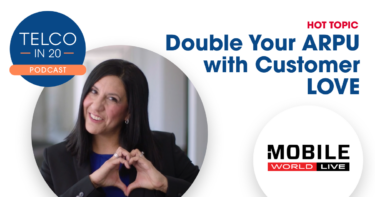If there’s a universally shared consumer experience, it’s that trying to contact your CSP for ANYTHING pretty much sucks. Telcos, sadly, remain the biggest culprits when it comes to terrible customer care.
This TelecomTV article is full of depressing statistics, like: ‘Telco sector worse than any other industry on the planet.’
WOW, that’s pretty bad.
So, what’s up with terrible telco customer experience (CX)?
While telcos blazed the technology trail to bring digital mobile networks to the world (GO 17G!), they have neglected their customers along the way. For years (decades?) telcos have had the luxury of locking customers in with long contracts, early termination fees and clunky number portability, creating processes so difficult that most customers didn’t bother to leave. But in today’s world, switching providers is a lot easier. Multiple SIM slots have been added to phones and whatever loyalty telco subscribers had before has been thrown out the window (see Vodafone Idea and Jio in India). What we are left with is that telcos need to start concentrating on CX, or else.
Telcos that care about CX are moving into the 21st century and leveraging the power of AI-driven customer care. AI done right – and that’s tough to do to start with – delivers fast responses, flexibility and, crucially, data analysis in real time. Telcos relying on their own systems for collecting customer insights invariably have outdated data. This means accurately targeted campaigns are late, and inaccurate campaigns alienate, rather than engage, valuable subscribers. Real-time analytics mean proper personalized service, enabling telcos to offer customers real-time solutions – for example, extra data if a bundle is expiring, or new deals as a contract ends. Happy subscribers who feel valued will stay with you.
The best place to find awesome AI? The public cloud.
Verizon is a great example of how investment in AI, analytics and the public cloud can radically improve customer engagement and CX. In 2019, Verizon adopted Google Contact Center AI (CC AI). CC AI uses advanced natural language understanding and high fidelity synthetic voice to sound nearly human, and a virtual assistant capable of handling far more questions in a conversation than a human agent. The conversational user interface means the virtual assistant can converse with the customer via chat, text and messaging, and use IVR if the same customer calls into the contact center. This brings consistency across all touchpoints – enhancing the Verizon brand and eliminating the total exasperation that comes with having to repeatedly reiterate your issue.
Check out this conversation between Google Cloud CEO Thomas Kurian and Shankar Arumugavelu, SVP and CIO of Verizon, which describes the project and its benefits.
Another great example of public cloud software delivering great results is the AWS public cloud infrastructure eGain Solve for Amazon Connect powered by AI and analytics, including virtual assistance via Amazon Alexa. It was deployed by a leading UK telco (my guess is this is BT – but it’s a total guess!) and supports customers through messaging, SMS, in-app, social, web, email, cobrowsing, video, click to call, and phone. This dramatically improved CX, with first call response (FCR) increased to 85%, NPS improved by 20 points, agent training time reduced by 43%, and speed to competency of agents improved by 50%. With thousands of advisors across several countries, this massively improves consistency and therefore CX, as well as strengthens the telco’s brand.
Still don’t believe me? Gartner has identified the technologies that will have the biggest impact on CX going forward – they are: AI; virtual customer assistants and chatbots, and omnichannel customer engagement. They all exist, with ongoing development and enhancement by the best developers in the business – those that work for the public cloud hyperscalers. Just using the tech will get you only halfway there, though you need to really invest time in tuning the AI/ML to make it useful and super valuable.
Check out this conversation I recently had with Microsoft Azure about the contact center projects it has going on. One of the ways these projects fail is that customers don’t put the time and effort into training the bots correctly. Sure, easy questions can be addressed out of the box; the real value is achieved when you put in the hours to deeply train the bots so they can answer real customer questions quickly and accurately.
It’s not like there’s no incentive to actually take care of the people whose hard-earned money the telcos are taking. According to PWC, 32% of consumers globally will walk away from a company after just one bad experience. That’s a third of customers lost through what is basically carelessness! Canada’s BCE and Telus revealed in 2017 that it cost almost 50 times less for them to keep an existing mobile customer than to acquire a new one, with retention costs of ~CAD $11-12, while average subscriber acquisition cost weighed in at more than CAD $500! [EYEBALL EMOJIS] Given those economics, isn’t it worth it to keep the subscribers you have fought so hard to get in the first place?



 Get my FREE insider newsletter, delivered every two weeks, with curated content to help telco execs across the globe move to the public cloud.
Get my FREE insider newsletter, delivered every two weeks, with curated content to help telco execs across the globe move to the public cloud.

